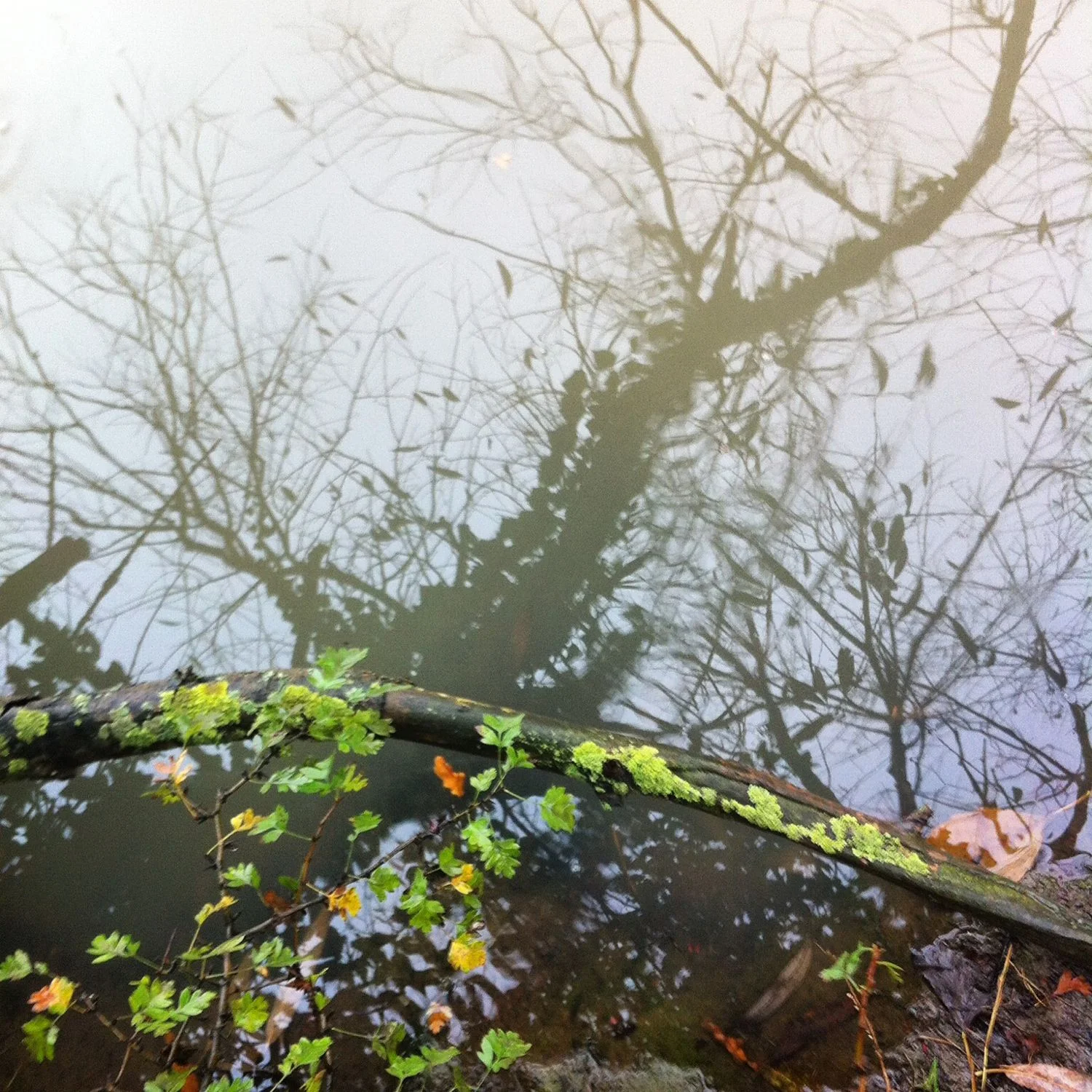“All the water features we can see in the landscape - springs, streams, rivers, lakes, ponds, bogs and fens - are joined together. Even if there’s no physical overground connection between one and another they’re all part of the seamless web of water that pervades the soil and the permeable rocks below. Open water is no more than the visible part of a hidden whole that is much bigger. Water features are accents of extreme wetness in a landscape which is nowhere totally dry. ”
Heavy rain this weekend. On Sunday morning, early, I extended my walk to take a look at the stream and the pond. The stream, which is usually no more than a trickle, was turbulent and milky-coloured. The pond was also opaque, which made the reflections of the trees look even more like a drawing on the surface of the water. I enjoyed the visual trickery - I could see the real branches hanging low over the water, the reflection of the branches above and stray leaves and twigs just below the surface. Above, below and beneath. And then to complete this game of perceptions, a duck would glide across the reflection, which would shatter and then re-form as the water became still again.
“It can be hard to tell an artificial pond from a purely natural one but natural ponds are probably quite rare. Ponds and lakes can’t be formed by water erosion because water doesn’t make hollows. It cuts down ever deeper along its course. In fact a stream flowing out of a pond will eventually drain it, though this will take a long time if the rock is hard. ”
This pond is on ex-farmland, on heavy clay soil and may therefore be man-made. A solution to the need to water livestock in the days before mains-fed drinking troughs. It's deep. The stream runs in one end and out the other. The pond is actually two connected ponds - one packed with bulrushes and lined with willows, the other larger one more open. It's one of the more interesting features in an otherwise rather featureless country park.
Many of the landscapes I'm drawn to are those where the land and water meet. Marshes, estuaries, coast. And the interaction between the land and the water at the edges is what interests me. The way one shapes and influences the other. There's this constant dialogue between the two elements. In tidal areas, this occurs before your eyes over the course of just a few hours. According to Chinese thinking, these are very yin - female - landscapes. Soft, watery, dark, life-giving, flowing, shape-shifting. But of course the point of that thinking is that it is the continuous interaction of yin and yang that drives the shaping of these landscapes, even if it seems that water dominates.
“Some landscapes are dominated by water. Many of these are highland landscapes which are wet because it rains so much, covered with blanket bogs and drained by rivers which roar in spate after every heavy rainfall. Others are in low-lying, flat places where it may not rain very much but drainage is slow. Most of the latter kind have been drained for agriculture and are now far removed from their natural state. But the water is still there. Though it may be confined in artificial waterways and straightened rivers, it’s ever ready to burst these bonds and flood the land like it used to. In these places you could almost say the landscape is not so much formed by the interaction between people and the land as between people and water.””



